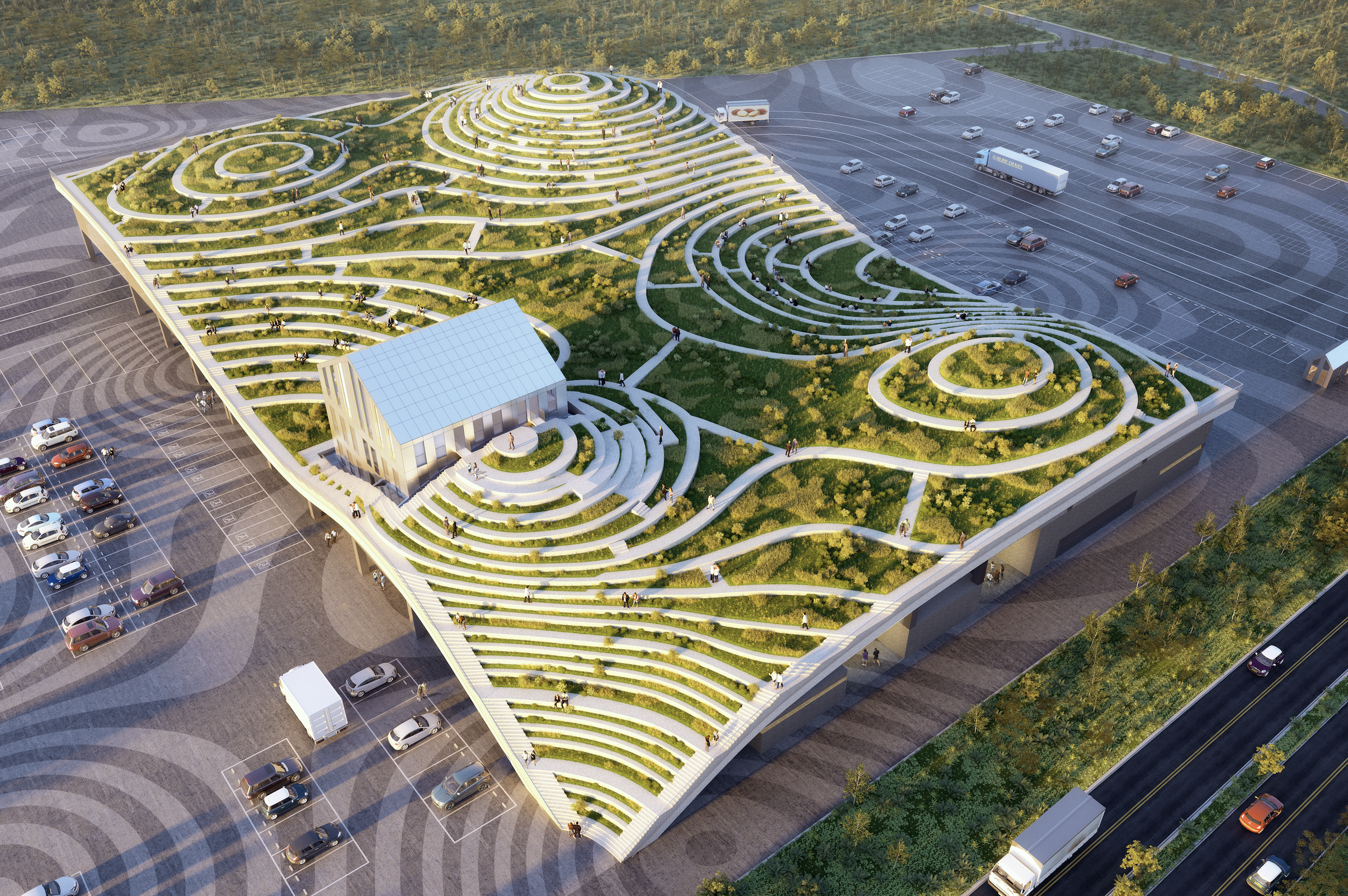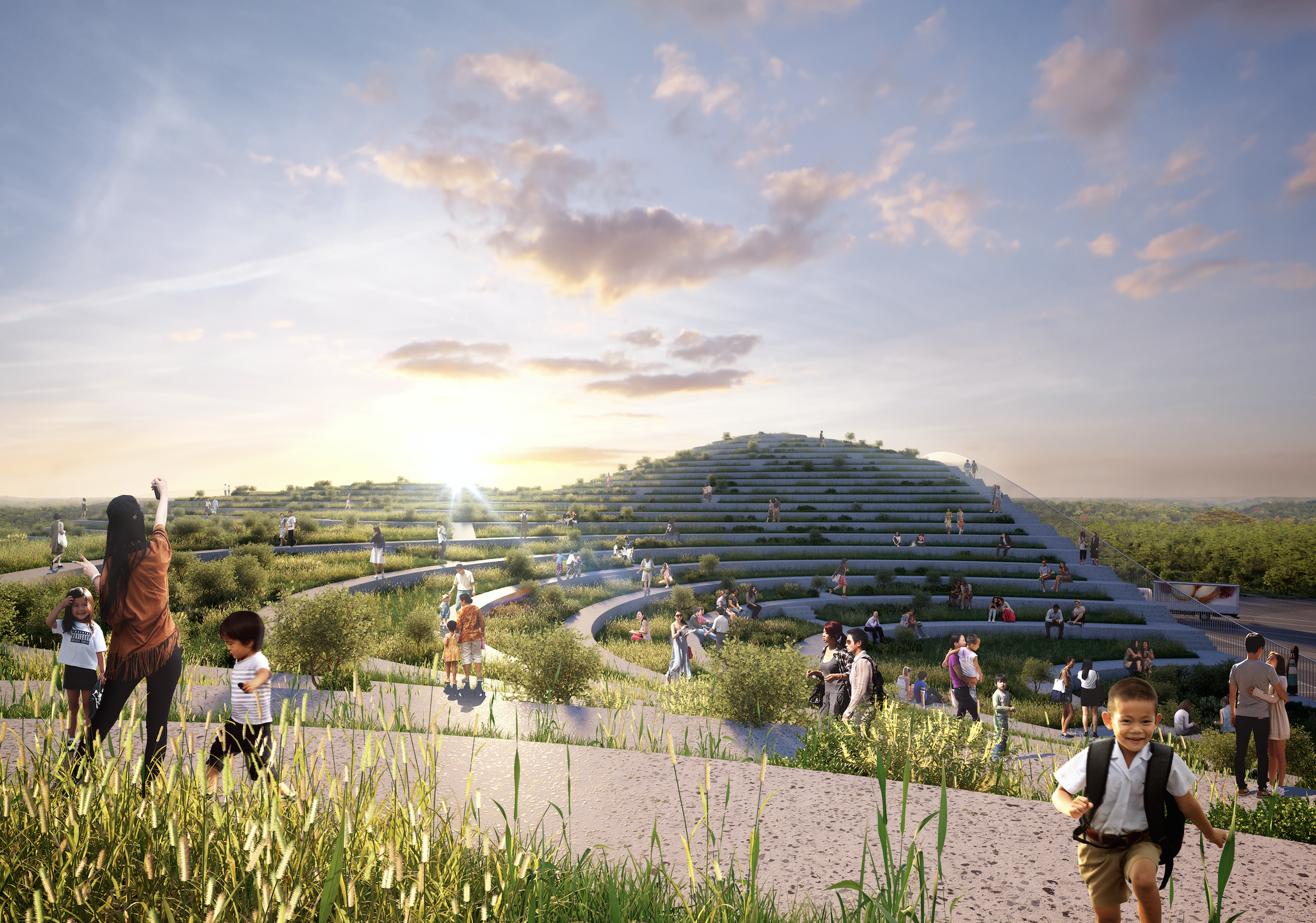A functional, farmable green roof in Taiwan
MVRDV have broken ground on Taiwan’s Tainan Xinhua Fruit and Vegetable Market - an open-air market topped by a terraced, farmable green roof.
Begun in 2016, the market was commissioned by the Tainan City Government Agricultural Bureau with the aim of creating a food supply hub for the region.
In response, MVRDV designed an 80,000m2 market that is both functional and beautiful. It will house 180 market and auction plots under a roof that slopes to provide both sufficient natural ventilation and ground level entry to a terraced green roof.
Taiwan’s Tainan Xinhua Fruit and Vegetable Market is set for completion in 2020. Image credit - MVRDV.
This roof gives the appearance of rolling green hills that are almost a continuation of the surrounding landscape. Each step will be used to grow a different crop. Some of the planned crops include pineapples, rice, roses and tea, with the level each is grown on determined by the plant’s individual climactic requirements.
The roof will also include sheltered spaces, benches and picnic tables, so the public can stop to enjoy the view.
The exterior of the project. Image credit - MVRDV.
MVRDV say the market takes “an often-prosaic part of the food industry and elevates it into a place for the public to experience food and appreciate views of the landscape.”
The Tainan Xinhua Fruit and Vegetable Market contributes to a growing trend of architecture that incorporates farming, inarguably part of a wider movement toward making everyday life more sustainable.
A four-storey tower punctures the main structure, both providing secondary roof access and housing a restaurant, administration offices and an exhibition centre to display the region’s produce.
The market was commissioned by the Tainan City Government Agricultural Bureau with the aim of creating a food supply hub for the region. Image credit - MVRDV.
MVRDV co-founder Winy Maas was struck by the natural beauty of Tainan, and felt the market could “become a building that symbolises this beauty as it compliments both landscape and its surrounding environment. It is completely functional and caters to the needs for auctioning, selling and buying goods, but its terraced roof with its collection of growing products will allow visitors to take in the landscape while escaping from bustle below.”
The project is expected to be completed in 2020, and will be close to public transport links.
Inside the market. Image credit - MVRDV.



